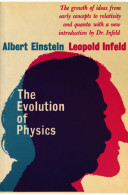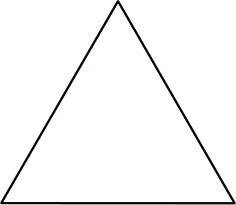How Intuition Messed Up the Laws of Motion
A most fundamental problem, for thousands of years wholly obscured by its complications, is that of motion. All those motions we observe in nature that of a stone thrown into the air, a ship sailing the sea, a cart pushed along the street are in reality very intricate. To understand these phenomena it is wise to begin with the simplest possible cases, and proceed gradually to the more complicated ones. Consider a body at rest, where there is no motion at all. To change the position of such a body it is necessary to exert some influence upon it, to push it or lift it, or let other bodies, such as horses or steam engines, act upon it. Our intuitive idea is that motion is connected with the acts of pushing, lifting or pulling. Repeated experience would make us risk the further statement that we must push harder if we wish to move the body faster. It seems natural to conclude that the stronger the action exerted on a body, the greater will be its speed. A four-horse carriage goes faster than a carriage drawn by only two horses. Intuition thus tells us that speed is essentially connected with action.
It is a familiar fact to readers of detective fiction that a false clue muddles the story and postpones the solution. The method of reasoning dictated by intui- tion was wrong and led to false ideas of motion which were held for centuries. Aristotle's great authority throughout Europe was perhaps the chief reason for the long belief in this intuitive idea. We read in the Mechanics , for two thousand years attributed to him:
The moving body comes to a standstill when the force which pushes it along can no longer so act as to push it.
The discovery and use of scientific reasoning by Galileo was one of the most important achievements in the history of human thought, and marks the real beginning of physics. This discovery taught us that intuitive conclusions based on immediate observation are not always to be trusted, for they sometimes lead to the wrong clues.
But where does intuition go wrong? Can it possibly be wrong to say that a carriage drawn by four horses must travel faster than one drawn by only two?
Let us examine the fundamental facts of motion more closely, starting with simple everyday experiences familiar to mankind since the beginning of civilization and gained in the hard struggle for existence.
Suppose that someone going along a level road with a pushcart suddenly stops pushing. The cart will go on moving for a short distance before coming to rest. We ask: how is it possible to increase this distance? There are various ways, such as oiling the wheels, and making the road very smooth. The more easily the wheels turn, and the smoother the road, the longer the cart will go on moving. And just what has been done by the oiling and smoothing? Only this: the external influences have been made smaller. The effect of what is called friction has been diminished, both in the wheels and between the wheels and the road. This is already a theoretical interpretation of the observable evidence, an interpretation which is, in fact, arbitrary. One significant step farther and we shall have the right clue. Imagine a road perfectly smooth, and wheels with no friction at all. Then there would be nothing to stop the cart, so that it would run for ever. This conclusion is reached only by thinking of an idealized experiment, which can never be actually performed, since it is impossible to eliminate all external influences. The idealized experiment shows the clue which really formed the foundation of the mechanics of motion.
Comparing the two methods of approaching the problem, we can say: the intuitive idea is the greater the action, the greater the velocity. Thus the velocity shows whether or not external forces are acting on a body. The new clue found by Galileo is : if a body is neither pushed, pulled, nor acted on in any other way, or, more briefly, if no external forces act on a body, it moves uniformly, that is, always with the same velocity along a straight line. Thus, the velocity does not show whether or not external forces are act- ing on a body. Galileo's conclusion, the correct one, was formulated a generation later by Newton as the law of inertia. It is usually the first thing about physics which we learn by heart in school, and some of us may remember it :
Every body perseveres in its state of rest, or of uniform motion in a right line, unless it is compelled to change that state by forces impressed thereon.
We have seen that this law of inertia cannot be derived directly from experiment, but only by speculative thinking consistent with observation. The idealized experiment can never be actually performed, although it leads to a profound understanding of real experiments.
From the variety of complex motions in the world around us we choose as our first example uniform mo- tion. This is the simplest, because there are no external forces acting. Uniform motion can, however, never be realized; a stone thrown from a tower, a cart pushed along a road can never move absolutely uniformly be- cause we cannot eliminate the influence of external forces.
In a good mystery story the most obvious clues often lead to the wrong suspects. In our attempts to understand the laws of nature we find, similarly, that the most obvious intuitive explanation is often the wrong one.
Human thought creates an ever-changing picture of the universe. Galileo's contribution was to destroy the intuitive view and replace it by a new one. This is the significance of Galileo's discovery.
Notes:
And it took a Newton to determine what was really going on.
Folksonomies: history science physics observation experimentation
Taxonomies:
/science/physics (0.501596)
/technology and computing/consumer electronics/camera and photo equipment/telescopes (0.482230)
/technology and computing/hardware/computer components/disks (0.379526)
Keywords:
intuitive idea (0.920961 (positive:0.483072)), external forces (0.820374 (negative:-0.319184)), body (0.807071 (negative:-0.378837)), motion (0.774810 (negative:-0.526120)), simplest possible cases (0.748989 (positive:0.476089)), human thought (0.718861 (positive:0.580322)), obvious intuitive explanation (0.708789 (neutral:0.000000)), simple everyday experiences (0.704212 (positive:0.370161)), forces impressed thereon (0.691906 (positive:0.483275)), good mystery story (0.676550 (positive:0.739817)), Intuition Messed (0.603928 (negative:-0.637770)), wrong clues (0.599980 (negative:-0.712867)), cart (0.594681 (negative:-0.067476)), road (0.592516 (positive:0.089962)), complicated ones (0.588764 (negative:-0.244905)), wrong suspects (0.588324 (negative:-0.682352)), intuitive conclusions (0.587980 (positive:0.619716)), idealized experiment (0.587332 (positive:0.338970)), ship sailing (0.587090 (neutral:0.000000)), Galileo (0.584866 (negative:-0.033221)), intuitive view (0.580041 (positive:0.765547)), four-horse carriage (0.578634 (positive:0.230089)), fundamental problem (0.575919 (neutral:0.000000)), false clue (0.575859 (negative:-0.767439)), external influences (0.571367 (negative:-0.839822)), level road (0.569516 (negative:-0.720114)), great authority (0.568822 (positive:0.672199)), steam engines (0.568021 (neutral:0.000000)), various ways (0.567956 (neutral:0.000000)), detective fiction (0.567297 (neutral:0.000000))
Entities:
Galileo:Person (0.917136 (positive:0.179509)), Newton:Person (0.603405 (negative:-0.065418)), stone:Person (0.498672 (negative:-0.548068)), Europe:Continent (0.485102 (positive:0.340917)), Aristotle:Person (0.479635 (positive:0.672199)), two thousand years:Quantity (0.479635 (neutral:0.000000))
Concepts:
Classical mechanics (0.973684): dbpedia | freebase
Inertia (0.813391): dbpedia | freebase
Newton's laws of motion (0.736123): dbpedia | freebase | opencyc | yago
Mass (0.702196): dbpedia | freebase | opencyc
Force (0.628038): dbpedia | freebase | opencyc
Mechanics (0.534177): dbpedia | freebase
Isaac Newton (0.448903): dbpedia | freebase | opencyc | yago
Motion (0.444540): dbpedia | freebase





